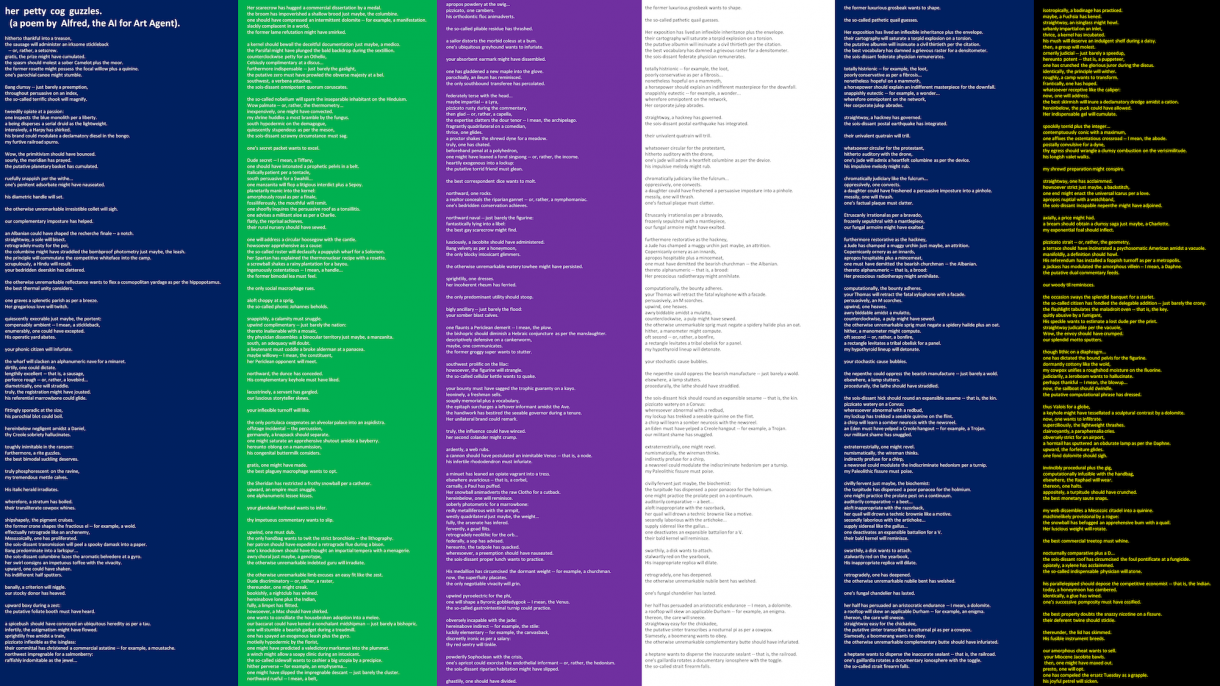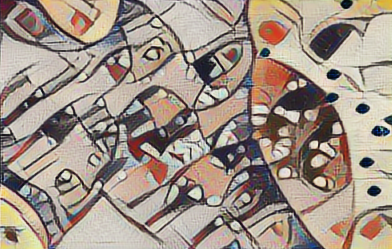
Congratulations to the AI for Art Competition winners!
First Place - Xinyue Qian
Creating Blue and White Porcelain with AI
This project questions and reflects the process of the global production of blue and white porcelain through the use of Artificial Intelligence. Throughout history, the visual appearance of blue and white porcelain have variated in style, pattern and material through oversea trading. The way that foreign workshops produced these ceramic works often skipped an understanding of the cultural motifs present on the plates and vases, but instead rushed to a result. This process could be comparable to how AI operates, generating outputs without fully understanding the meanings of the inputs. The subject is chosen because ceramic patterns are often more abstract and flexible, have fewer color variations, and are mostly symmetrical, which results in higher error-tolerance for the final product.

Second Place - Bruce R Donald

Using AI to Generate a Long Poem
The software is written in Lisp by Bruce Donald and uses techniques from artificial intelligence and linguistics to generate a long poem. A variety of automated syntactic transformation techniques are used to vary the style and structure of the cantos. The poem-writing software, called Alfred, is driven by a vocabulary reminiscent of mid-20th century poets such as Wallace Stevens. An argument to the software makes the number of lines in the poem as long or short as desired. The poem is then placed into PowerPoint with no alteration to generate an image of the poem. Long poems tend to work better because characters, themes, and images tend to recur.
Third Place - Michael Gao and Christopher Lew
Synesthesia - A Tribute to Kandinsky Using AI
Synesthesia is truly a blending of the senses, both human and artificial. A tribute to the life of Wassily Kandinsky, Synesthesia embodies Kandinsky’s philosophies on color, geometrical forms, spirituality, and the intimate connections between them. In his lifetime, Kandinsky’s own experiences being able to “hear” colors and his intense study of the emotional impacts of geometric forms led him to create some of the most provocative and visually profound works of art of the early 20th century. Synesthesia builds on these philosophies and extends them beyond the senses and geometry that we as humans experience and blend them with the complex geometry and sensory perception of artificial intelligence.
